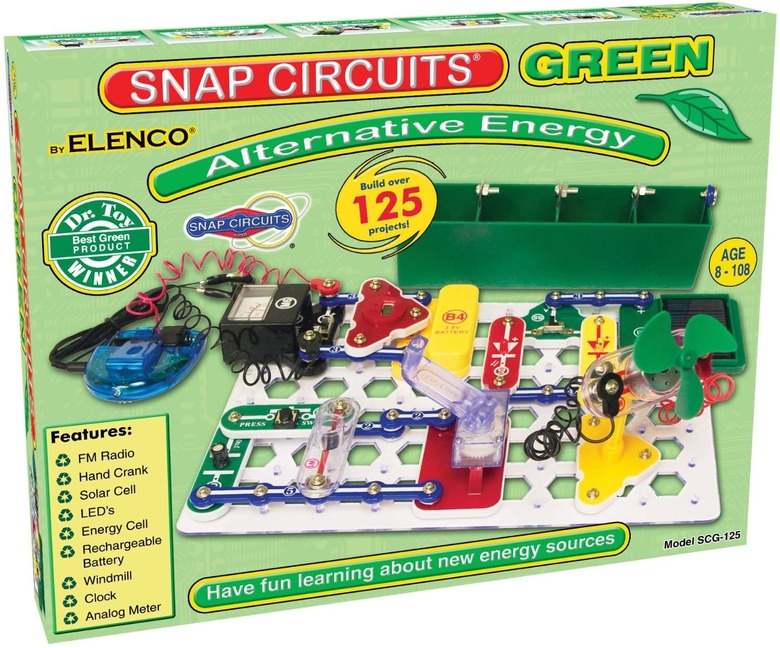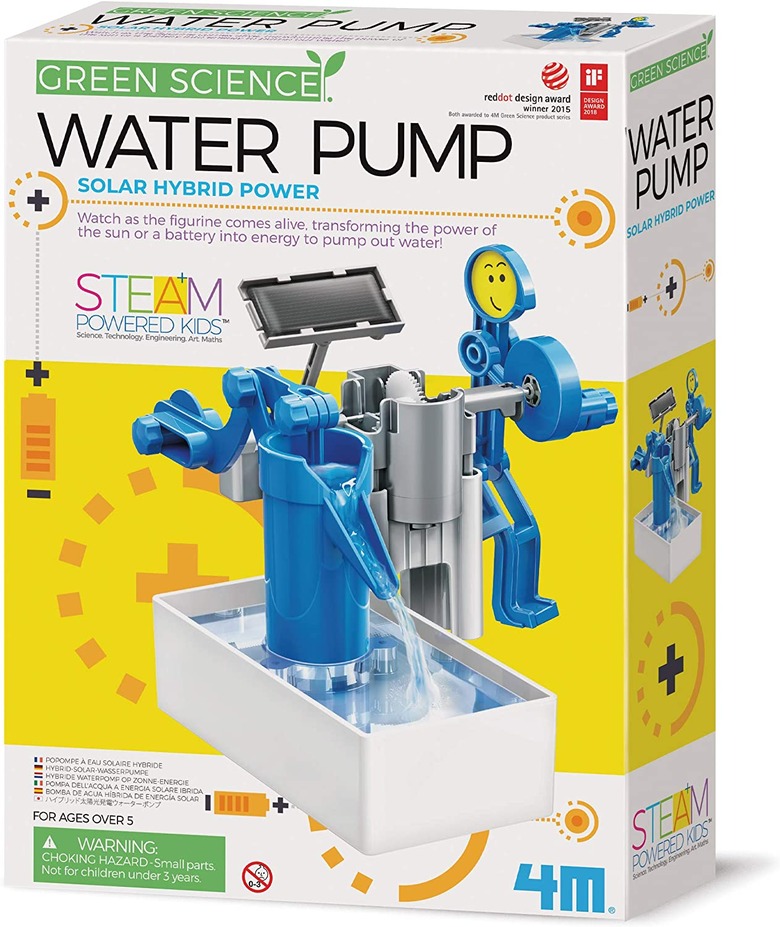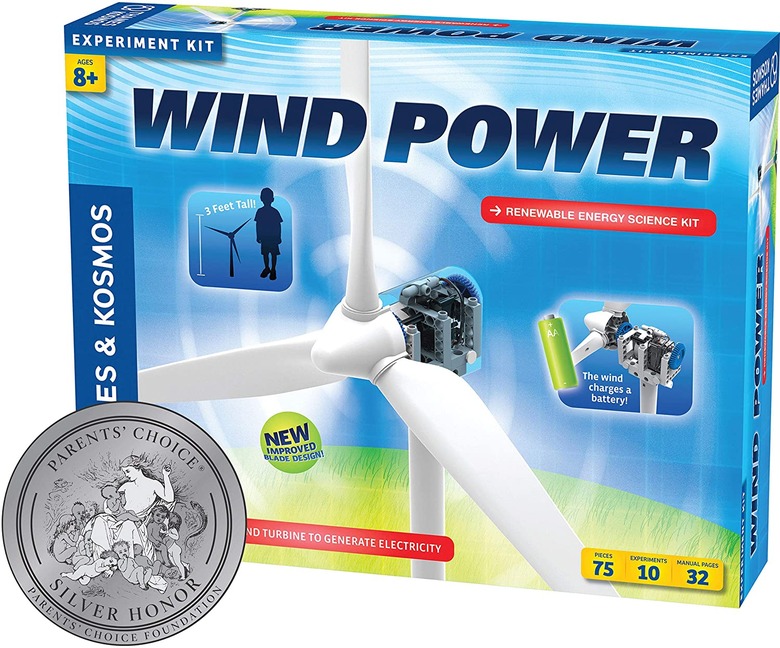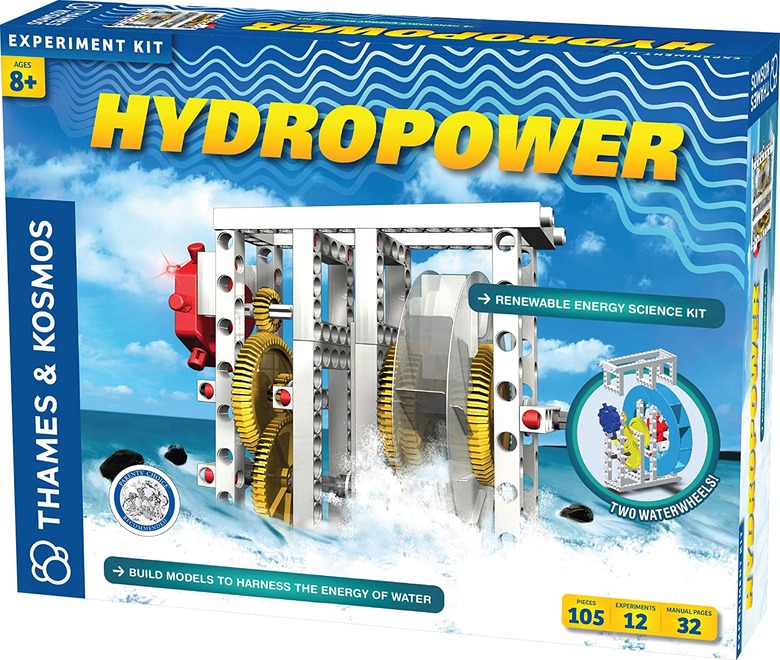What Is Renewable Energy? Create Clean Energy With These Science Kits
We may receive a commission on purchases made from links.
Sciencing may earn compensation through affiliate links in this article.
If you keep up with environmental news, chances are you know all about our reliance on fossil fuels. From natural gas to oil to coal, fossil fuels are still by far the largest source of energy for the United States, accounting for 80% of our energy use.
And that's not great for the environment. Burning fossil fuels releases carbon into the atmosphere. It leads to air pollution, and even creates greenhouse gases that insulate the planet and contribute to climate change. What's more, fossil fuels are nonrenewable energy sources. They're formed over millions of years as dead organisms are buried and break down – and when they're gone, they're gone.
That's why the industry is moving to forms of renewable energy. These sources of energy can't be "used up" so they avoid one of the pitfalls of fossil fuels. And renewable energy sources tend to create less pollution, making them better for the planet overall.
Here's what you need to know about renewable energy, and how to learn more about it at home with fun science kits.
Types of Renewable Energy
Types of Renewable Energy
There are a few types of renewable energy, and governments are using a mix of energy sources to try and become less reliant on fossil fuels.
Solar Energy
The sun isn't going to burn out anytime soon, making it an ideal renewable energy source. Energy from the sun comes in the form of photons, which are particles of light. Solar energy panels absorb photons and convert them into electricity. Putting solar panels on a house, for instance, can power the electronics inside, helping to lower energy bills.
Wind Energy
If you've been outside on a windy day, you know winds can generate force. That force can, say, blow leaves across the sidewalk, but it can also be used to generate electricity. Giant windmills, called wind turbines, rotate when the wind blows. That rotation powers a generator, which transforms the energy from the wind into usable electricity.
Water Energy
Water generates a lot of force, too, and can be used as a source of energy, called hydroelectricity. The principle is similar to wind turbines: a generator transforms the energy from the moving water into electricity, which can be used to power our homes and cities. That water can come from falling or rushing water, as well as tides (called tidal energy).
Renewable Biomass Energy
Biomass sounds like a fancy term, but it's pretty simple: it refers to energy produced by living or once-living organisms. Ever burned wood to make fire? You turned biomass energy into heat.
Biomass energy can be created as a byproduct of agriculture (like the biofuel, ethanol, derived from corn). It can also be made from non-edible animal products, or from scraps and leftovers from lumber and paper production.
While biomass energy isn't renewable in the same way as solar, wind or water energy, it can be made quickly. So as long as we use biomass energy responsibly, we can make it fast enough to replace the energy we use, so it works like a renewable resource.
How to Learn About Renewable Energy at Home
How to Learn About Renewable Energy at Home
If you want to create a greener future, start learning about different types of renewable energy at home. These kits can help.
Snap Circuits Green Energy Kit
With a little bit of everything, this kit is the perfect first step to learn more about renewable energy. It uses a few types of renewable energy, including solar cells and windmills, to create a working circuit that can power a clock. It's also ideal for students interested in physics, math and engineering, with over 100 pages of experiments to hone their hands-on science skills.
**Available at Amazon:** US&ref=as_li_ss_tl'>Snap Circuits Green Alternative Energy Electronics Exploration Kit
Green Hybrid Solar Water Pump Kit
Harness the power of the sun at home with this DIY science kit. This water pump comes with its own solar panel, so it can power itself outside when it's sunny out. But don't worry, you can use it anytime – it's battery-powered, too, so it can still run even if it's cloudy or rainy.
**Available at Amazon:** US&ref=as_li_ss_tl'>Water Pump Solar Hybrid Power Kit by Green Science
Wind Power Science Kit
Real wind turbines are massive, but you can use this kit to make a miniature version at home. It works just like the real thing. And as the wind rotates the turbine, the generator inside will use that energy to charge a battery. Take it camping, and use the turbine as a back-up to charge your battery-powered flashlight.
**Available at Amazon:** US&ref=as_li_ss_tl'>Wind Power Science Kit by Thames & Kosmos
Hydropower Science Kit
Ever wondered what a water power plant looked like inside? This kit is perfect for you. Get a glimpse at the system that rotates to turn the energy from moving water into electricity, and use the kit to power an LED light. This involved kit makes a great science fair project, since you can both explain how water energy works and provide a demonstration.
**Available at Amazon:** US&ref=as_li_ss_tl'>Hydropower Renewable Energy Science Kit by Thames & Kosmos
Cite This Article
MLA
Tremblay, Sylvie. "What Is Renewable Energy? Create Clean Energy With These Science Kits" sciencing.com, https://www.sciencing.com/what-is-renewable-energy-13764545/. 19 July 2021.
APA
Tremblay, Sylvie. (2021, July 19). What Is Renewable Energy? Create Clean Energy With These Science Kits. sciencing.com. Retrieved from https://www.sciencing.com/what-is-renewable-energy-13764545/
Chicago
Tremblay, Sylvie. What Is Renewable Energy? Create Clean Energy With These Science Kits last modified August 30, 2022. https://www.sciencing.com/what-is-renewable-energy-13764545/




